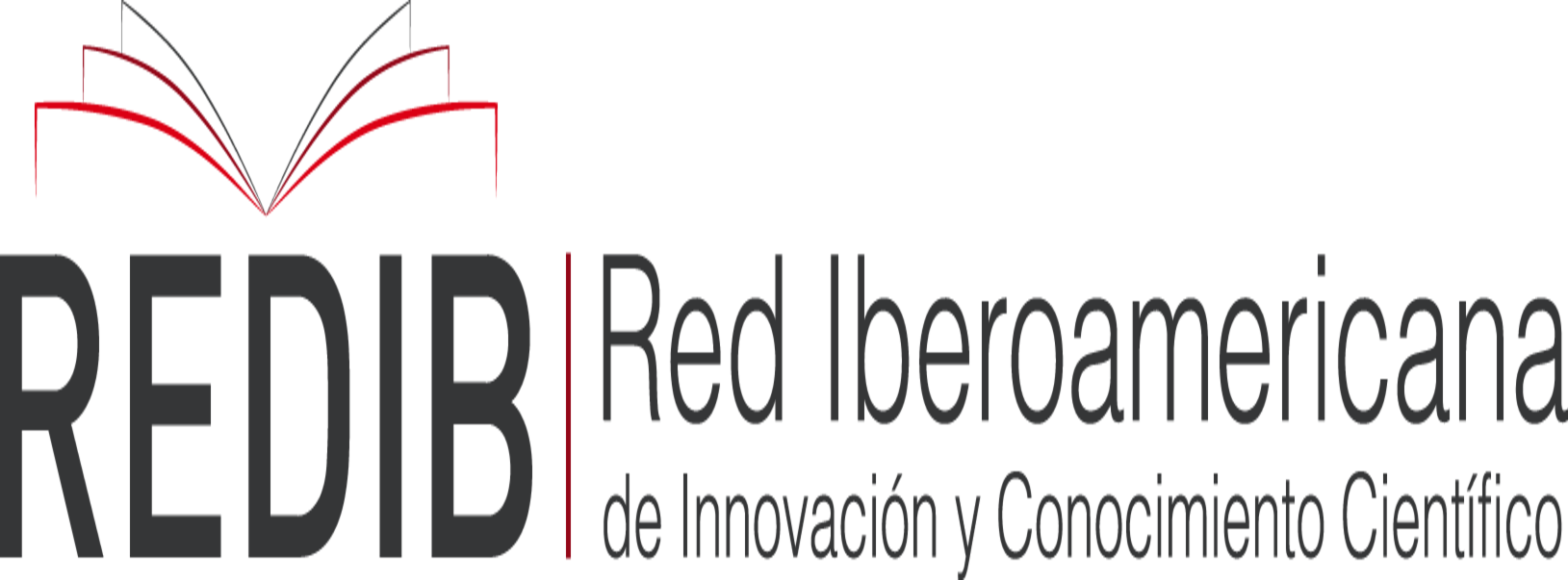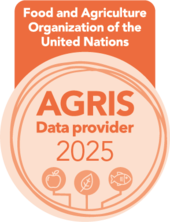Extractos vegetales en el control del pulgón (Brevicoryne brassicae L.) en el cultivo de la Col (Brassica oleracea var. Capitata), en Perú
DOI:
https://doi.org/10.57188/manglar.2023.036Resumen
La introducción de las hortalizas como cultivo alternativo en la selva alta peruana también implican la búsqueda de métodos de control de plagas amigables con el ambiente y el cuidado de la biodiversidad, aquí evaluamos el efecto biocida de los extractos acuosos de neem (Azadirachta indica), barbasco (Lonchocarpus nicou L.) y molle (Schinus molle L.) para el control del pulgo (Brevicoryne brassicae L.) en col (Brassica oleracea var capitata) durante la campaña agrícola 2020, en un diseño de Bloques Completos al Azar (DBCA) con 3 tratamientos, más testigo absoluto y 4 réplicas. Los extractos se prepararon a partir de la combinación de hojas, tallos, corteza, frutos y raíces de las plantas a razón de 1kg y aplicados a una dosis de 6 ml por litro de agua. El barbasco fue el más eficiente en la reducción del número de pulgones por planta y la más toxica para causar en un 75,34% de mortalidad en 45 días de tratamiento, seguida por molle con 61,43% y con peso de pella de hasta 1725 g. Se concluye que los extractos vegetales disminuyeron las poblaciones del pulgón y resultan adecuados para su uso en los programas del Manejo Integrado.
Descargas
Referencias
Ahmad, M., & Akhtar, S. (2013). Development of insecticide resistance in field populations of brevicoryne brassicae (Hemiptera: Aphididae) in Pakistan. Journal of Economic Entomology, 106(2), 954–958. https://doi.org/10.1603/EC12233
Alegre, A., Iannacone, J., & Carhuapoma, M. (2017). Toxicidad del extracto acuoso etanólico y hexánico de Annona muricata, Minthostachys mollis, Lupinus mutabilis y Chenopodium quinoa sobre Tetranychus urticae y Chrysoperla externa. Chilean Journal of Agricultural and Animal Sciences, 33(3), 273–284. https://doi.org/10.4067/s0719-38902017005000705
Ali, S., Farooqi, M. A., Sajjad, A., Ullah, M. I., Qureshi, A. K., Siddique, B., … Asghar, A. (2018). Compatibility of entomopathogenic fungi and botanical extracts against the wheat aphid, Sitobion avenae (Fab.) (hemiptera: Aphididae). Egyptian Journal of Biological Pest Control, 28(1), 1–6. https://doi.org/10.1186/s41938-018-0101-9
Ali, M., Ahmad, T., & Hussain, B. (2023). Aphicidal activity of some indigenous plants extracts against cabbage aphid, Brevicoryne brassicae (Hemiptera: Aphididae) and mealy plum aphid, Hyalopterus pruni (Hemiptera: Aphididae). Archives of Phytopathology and Plant Protection, 56(11), 853–871. https://doi.org/10.1080/03235408.2023.2225657
Al-Rubae, A. Y. (2009). The potential uses of Melia azedarach L. as pesticidal and medicinal plant, review. American-Eurasian Journal of Sustainable Agriculture, 3(2), 185–194.
Bahar, M. H., Islam, M. A., Mannan, M. A., & Uddin, M. J. (2007). Effectiveness of some botanical extracts on bean aphids attacking yard-long beans. Journal of Entomology, 4(2), 136–142. https://doi.org/10.3923/je.2007.136.142
Barreto Serrano, B. (2019). Evaluación del efecto de Bioinsecticida de tres extractos orgánicos para el control de pulgón (Brevicoryne brassicae L.) En el cultivo de brócoli (Brassica oleracea var. Itálica) Distrito de Chuquibambilla-Provincia de Grau. Tesis licenciatura. Universidad Nacional Micaela Bastidas de Apurímac.
Becerra, L. A. (2020). Evaluación de extractos vegetales para el control de daños de Carmenta foraseminis Eichlin (Mazorquero) en Theobroma cacao, Moyobamba 2018.
Blackman, R. L., & Eastop, V. F. (2000). Aphids on the world's crops: an identification and information guide (No. Ed. 2). John Wiley & Sons Ltd.
Castillo-Valiente, J., & Lino, E. (2003). Efecto de extractos naturales, goma natural y aceite vegetal sobre el control del" cogollero del maíz", Spodoptera frugiperda (J. E. Smith) (Lepidoptera: Noctuidae), en La Libertad, Perú. Revista Peruana de Entolomogía, 43(1), 107-112.
Cloyd, R. A., Galle, C. L., Keith, S. R., Kalscheur, N. A., & Kemp, K. E. (2009). Effect of commercially available plant-derived essential oil products on arthropod pests. Journal of Economic Entomology, 102(4), 1567-1579. https://doi.org/10.1603/029.102.0422
Fathipour, Y., Hosseini, A., Talebi, A. A., & Moharramipour, S. (2006). Functional response and mutual interference of Diaeretiella rapae (Hymenoptera: Aphidiidae) on Brevicoryne brassicae (Homoptera: Aphididae). Entomologica Fennica, 17, 90–97. https://doi.org/10.33338/ef.84293
Gerhardson, B. (2002, August 1). Biological substitutes for pesticides. Trends in Biotechnology. https://doi.org/10.1016/S0167-7799(02)02021-8
Harrewijn, P., van Oosten, AM., & Piron, PGM (2000). Funciones de los terpenoides naturales en las interrelaciones entre organismos. En: Terpenoides naturales como mensajeros. Springer, Dordrecht. https://doi.org/10.1007/978-94-010-0767-2_5
Hawkins, N. J., Bass, C., Dixon, A., & Neve, P. (2019). The evolutionary origins of pesticide resistance. Biological Reviews, 94(1), 135-155. https://doi.org/10.1111/brv.12440
Hill, D. S. (1987). Agricultural insect pests of the tropics and their control. Cambridge University Press. London, pp: 154-155.
Isman, M. B. (2016). Pesticides based on plant essential oils: Phytochemical and practical considerations. In ACS Symposium Series (Vol. 1218, pp. 13–26). American Chemical Society. https://doi.org/10.1021/bk-2016-1218.ch002
Kessing, J. L. M., & Mau, R. F. L. (1991). Cabbage aphid, Brevicoryne brassicae (Linnaeus). Crop Knowledge Master. Department of Entomology, Honolulu, Hawaii.
Kibrom, G., Kebede, K., Weldehaweria, G., Dejen, G., Mekonen, S., Gebreegziabher, E., & Nagappan, R. (2012). Field evaluation of aqueous extract of Melia azedarach Linn. seeds against cabbage aphid, Brevicoryne brassicae Linn. (Homoptera: Aphididae), and its predator Coccinella septempunctata Linn. (Coleoptera: Coccinellidae). Archives of phytopathology and plant protection, 45(11), 1273-1279. https://doi.org/10.1080/03235408.2012.673260
Kumar P., & Poehling HM (2006). Persistence of soil and foliar azadirachtin treatments to control sweet potato whitefly Bemisia tabaci Gennadius (Homoptera: Aleyrodidae) on tomatoes under controlled (laboratory) and field (netted greenhouse) conditions in the humid tropics. J. Pestic. Sci., 79, 189-199. https://doi.org/10.1007/s10340-006-0133-x
Kumar, S., Anmol, Sharma, U., & Reddy, S. E. (2023). Insecticidal potential of extracts, fractions, and molecules of Aconitum heterophyllum Wall ex. Royle against aphid Aphis craccivora Koch (Hemiptera: Aphididae). Pest Management Science, 79(4), 1538-1546. https://doi.org/10.1002/ps.7324
Lannacone, J., & Alvariño, L. (2010). Toxicidad de Schinus molle L. (Anacardiaceae) a cuatro controladores biológicos de plagas agrícolas en el Perú. Acta zoológica mexicana, 26(3), 603-615.
Lannacone, J., & C. Quispe. (2004). Efecto insecticida de dos extractos vegetales sobre el gorgojo del maíz, Sitophilus zeamais Motschulsky, 1855 (Coleoptera: Curculionidae) en Perú. Revista Peruana de Entomología. 44, 81-87. https://www.revperuentomol.com.pe/index.php/rev-peru-entomol/article/view/186/161
Lowery, D. T., Isman, M. B., & Brard, N. L. (1993). Laboratory and field evaluation of neem for the control of aphids (Homoptera: Aphididae). Journal of Economic Entomology, 86(3), 864-870. https://doi.org/10.1093/jee/86.3.864
Malpartida, E., Meneses, L., & Merma, I. (2003). Sistemas de producción de trópico-selva alta: el caso de Huayopata, la convención, Cuzco. editorial agraria Telf.: 349-5647 anexo: 190 Apartado: 456, Lima 100, 117.
Mazhawidza, E., & Mvumi, B. M. (2017). Field evaluation of aqueous indigenous plant extracts against the diamondback moth, Plutella xylostella L. and the rape aphid, Brevicoryne brassicae L. in brassica production. Industrial Crops and Products, 110, 36-44. https://doi.org/10.1016/j.indcrop.2017.09.053
Mpumi, N., Machunda, R., Mtei, K., & Ndakidemi, P. (2020). Selected insect pests of economic importance to Brassica oleracea L. their control strategies and the potential threat to environmental pollution in Africa. Sustainability, 12, 3824.
Nia, B., Frah, N., & Azoui, I. (2015). Insecticidal activity of three plants extracts against Myzus persicae (Sulzer, 1776) and their phytochemical screening. Acta Agriculturae Slovenica, 105(2), 261–267. https://doi.org/10.14720/aas.2015.105.2.09
Nzanza, B., & Mashela, P. W. (2012). Control of whiteflies and aphids in tomato (Solanum lycopersicum L.) by fermented plant extracts of neem leaf and wild garlic. African Journal of Biotechnology, 11(94), 16077-16082. https://doi.org/10.5897/AJB12.775
Pahla, I., Tumbare, T., Chitamba, J., & Kapenzi, A. (2014). Evaluation of Allium sativum and Allium cepa intercrops on the control of Brevicoryne brassicae (Homoptera: Aphididae) in Brassica napus. Int J Farming Allied Sci, 3, 1069-1074.
Pereira, A. J., Cardoso, I. M., Araújo, H. D., Santana, F. C., Carneiro, A. P., Coelho, S. P., & Pereira, F. J. (2019). Control of Brevicoryne brassicae (Hemiptera: Aphididae) with extracts of Agave americana var. Marginata Trel. in Brassica oleracea crops. Annals of Applied Biology, 174(1), 14-19. https://doi.org/10.1111/aab.12471
Pérez López, E. (2012). Plaguicidas botánicos: una alternativa a tener en cuenta. Fitosanidad, 16(1), 51–59.
Pontoppidan, B., Hopkins, R., Rask, L., & Meijer, J. (2003). Infestation by cabbage aphid (Brevicoryne brassicae) on oilseed rape (Brassica napus) causes a long-lasting induction of the myrosinase system. Entomologia Experimentalis et Applicata, 109(1), 55– 62. https://doi.org/10.1046/j.1570-7458.2003.00088.x
Román-Farje, A., Iannacone, J., & Alvariño, L. (2017). Efecto tóxico del saúco, Sambucus peruviana (Caprifoliaceae), en Daphnia magna, Sitophilus zeamais y Copidosoma koehleri en Perú. Chilean journal of agricultural & animal sciences, 33(1), 3-13. http://dx.doi.org/10.4067/S0719-38902017005000101
Sabogal, A. (2021). Peruvian Gardens. In Urban Ecology (pp. 77-96). Springer, Cham.
Saikia PD, Das D., & Saikia L (2000). Evaluation of botanicals and fish oil formulations against bean aphid, Aphis craccivora Koch. J. Agric. Sci. Soc. North-East, 13. 79-90.
San Roque, M. M. (2019). Fuentes de abonamiento y su efecto en el carbono orgánico del suelo y el rendimiento de col morada (Brassica Oleracea Var. Capitata) en el CIFO–UNHEVAL.
Shaalan, E., Canyon, D., Younes, M., Abdel-Wahab, H., & Mansour, A. (2005). Una revisión de fitoquímicos botánicos con potencial mosquitocida. Medio Ambiente Internacional, 31(8), 1149–1166. https://doi.org/10.1016/j.envint.2005.03.003 .
Shonga, E., & Getu, E. (2021). Efficacy of plant derived and synthetic insecticides against cabbage aphid, Brevicoryne brassicae (L.) (Homoptera: Aphididae) and their effect on coccinellid predators. SINET: Ethiopian Journal of Science, 44(1), 27-37. https://doi.org/10.4314/sinet.v44i1.3
Shahid Nisar, M., Rashid, A., Samiullah, K., Haidar, M. R., & Malik, S. (2023). Ecofriendly approaches for controlling mustard aphid (Lipaphis erysimi KALT.) infestation. Plant Protection, 7(1), 1–7. https://doi.org/10.33804/pp.007.01.4455
Sibanda, T., Dobson, H. M., Cooper, J. F., Manyangarirwa, W., & Chiimba, W. (2000). Pest management challenges for small-holder vegetable farmers in Zimbabwe. Crop Protection, 19, 807–815. https://doi.org/10.1016/S0261-2194(00)00108-3
Silva, A. X., Jander, G., Samaniego, H., Ramsey J. S., & Figueroa, C. C. (2012). Insecticide resistance mechanisms in the green peach aphid Myzus persicae (Hemiptera: Aphididae) I: A transcriptomic survey. PLoS ONE, 7(6), e36366. https://doi.org/10.1371/journal.pone.0036366.
Soh, B. S. B., Kekeunou, S., Nanga Nanga, S., Dongmo, M., & Rachid, H. (2018). Effect of temperature on the biological parameters of the cabbage aphid Brevicoryne brassicae. Ecology and Evolution, 8(23), 11819-11832. https://doi.org/10.1007/s12600-021-00882-3
Stevenson, P. C., & Belmain, S. R. (2016). Pesticidal plants in African agriculture: Local uses and global perspectives. Outlooks on pest management, 27(5), 226-230.
Torres, D. M., Orea Igarza, U., Brito Vallina, M. L., & Cordero Machado, E. (2013). Estudio de la extracción del follaje de Barbasco (Lonchocarpus nicou) como fuente biocida (en condiciones de la Amazonía en Ecuador). Revista Ciencias Técnicas Agropecuarias, 22(4), 41-49.
Turner A., & Chivinge, O. (1999). Production and marketing of horticultural crops in Zimbabwe: A survey of smallholder farmers in the Mashonaland East Province. CIIFAD, NY 14853.
Uusiku, N. P., Oelofse, A., Duodu, K. G., Bester, M. J., & Faber, M., (2010). Nutritional value of leafy vegetables of sub-Saharan Africa and their potential contribution to human health: A review. Journal of Food Composition and Analysis, 23, 499-509 https://doi.org/10.1016/j.jfca.2010.05.002
Vélez-Ruiz, M. C., Meza-Vera, R. J., Abasolo-Pacheco, F., & Álvarez-Romero, P. I. (2022). Uso de extractos botánicos para el control de pulgón (Myzus persicae: Aphididae) y mosca blanca (Bemisia tabaci: Aleyrodidae) en el cultivo de pimiento (Capsicum anuum: Solanaceae), en Ecuador. Terra Latinoamericana, 40, 1-11, e1454. https://doi.org/10.28940/terra.v40i0.1454
Publicado
Número
Sección
Licencia
Derechos de autor 2023 Jeison Falcon-Alvarado, Agustina Valverde-Rodriguez, Luisa Álvarez-Benaute, Henry Briceño-Yen, Miltao Edelio Campos-Albornoz

Esta obra está bajo una licencia internacional Creative Commons Atribución 4.0.

Manglar is an open access journal distributed under the terms and conditions of Creative Commons Attribution 4.0 International license









